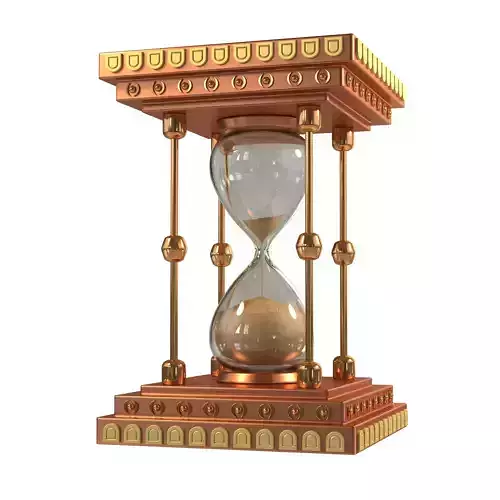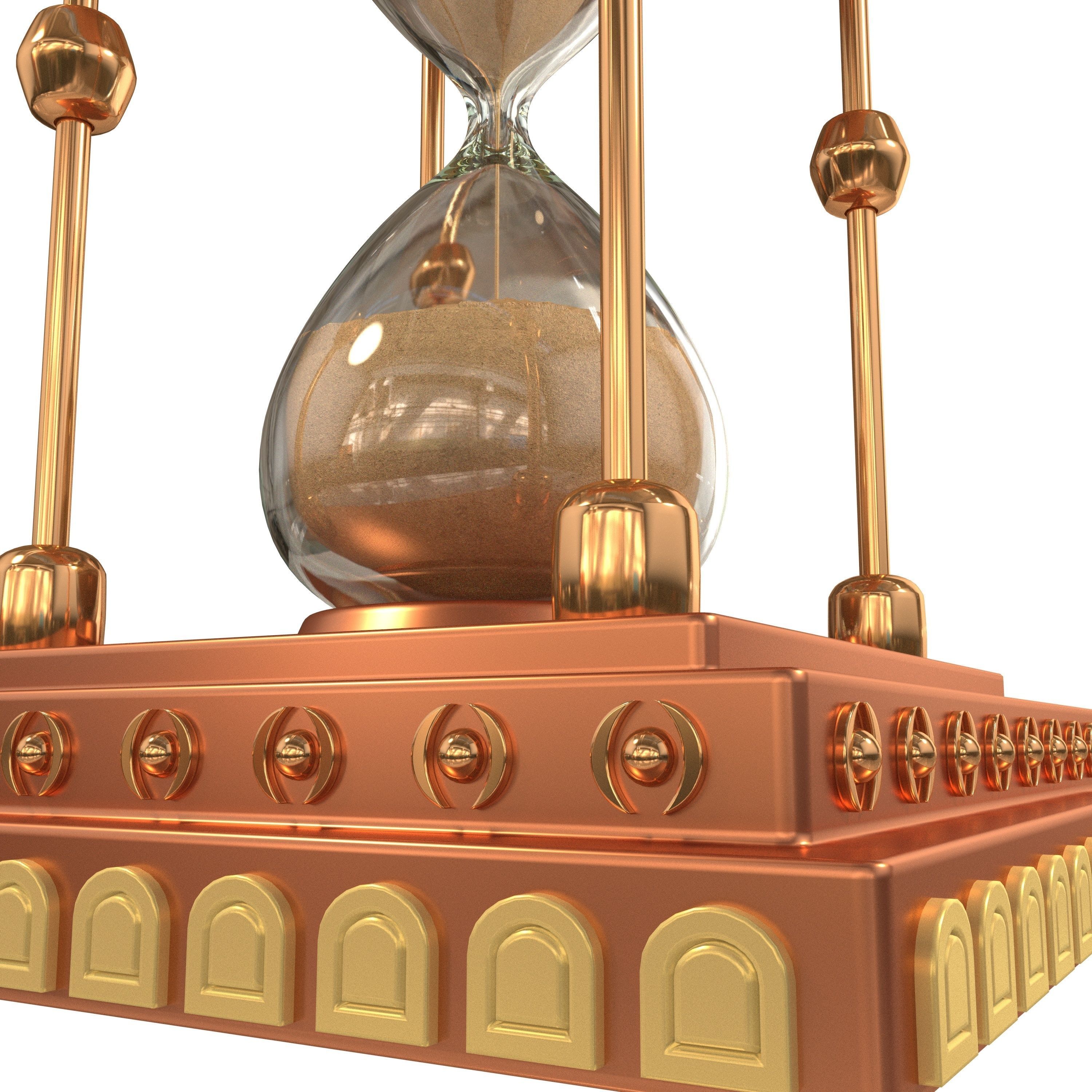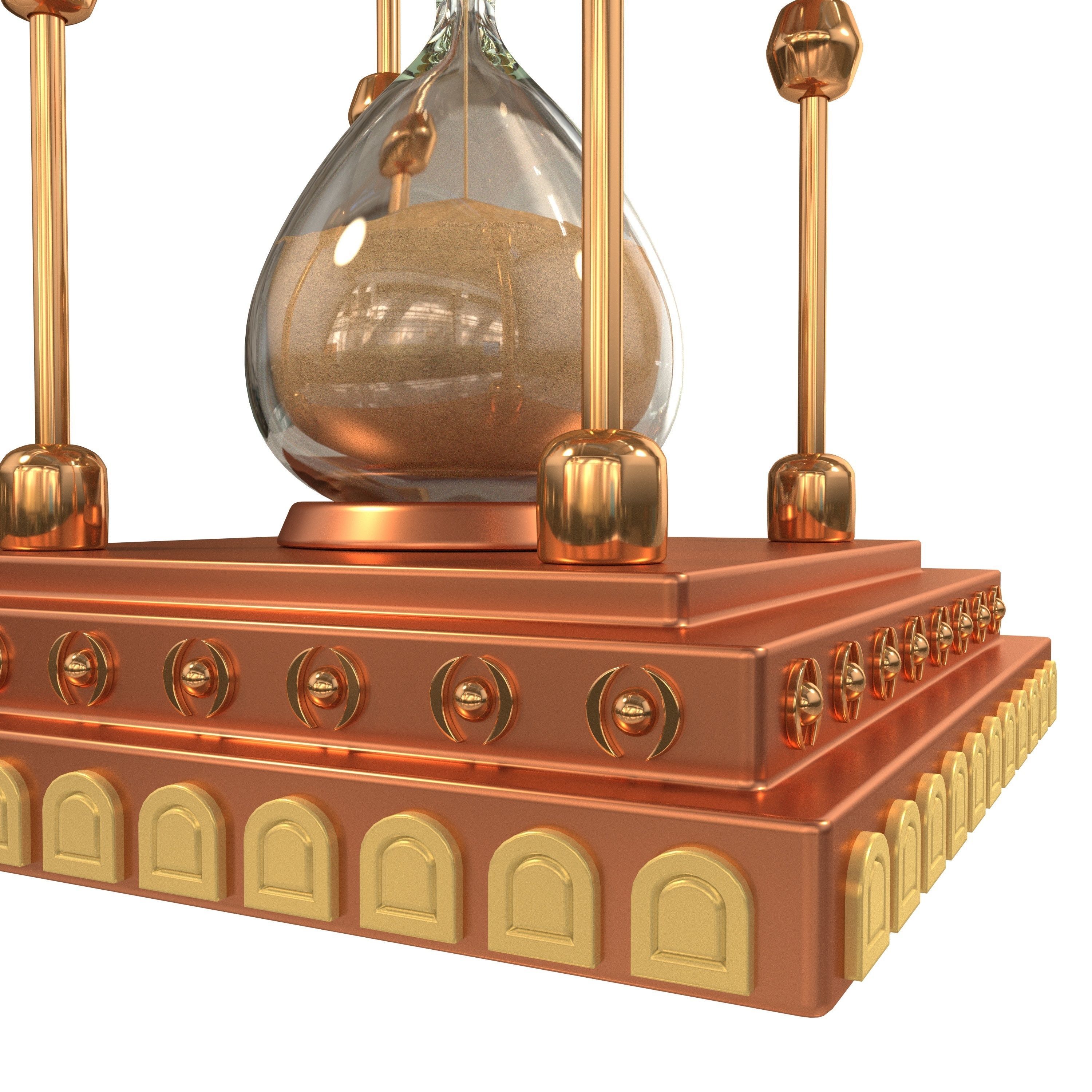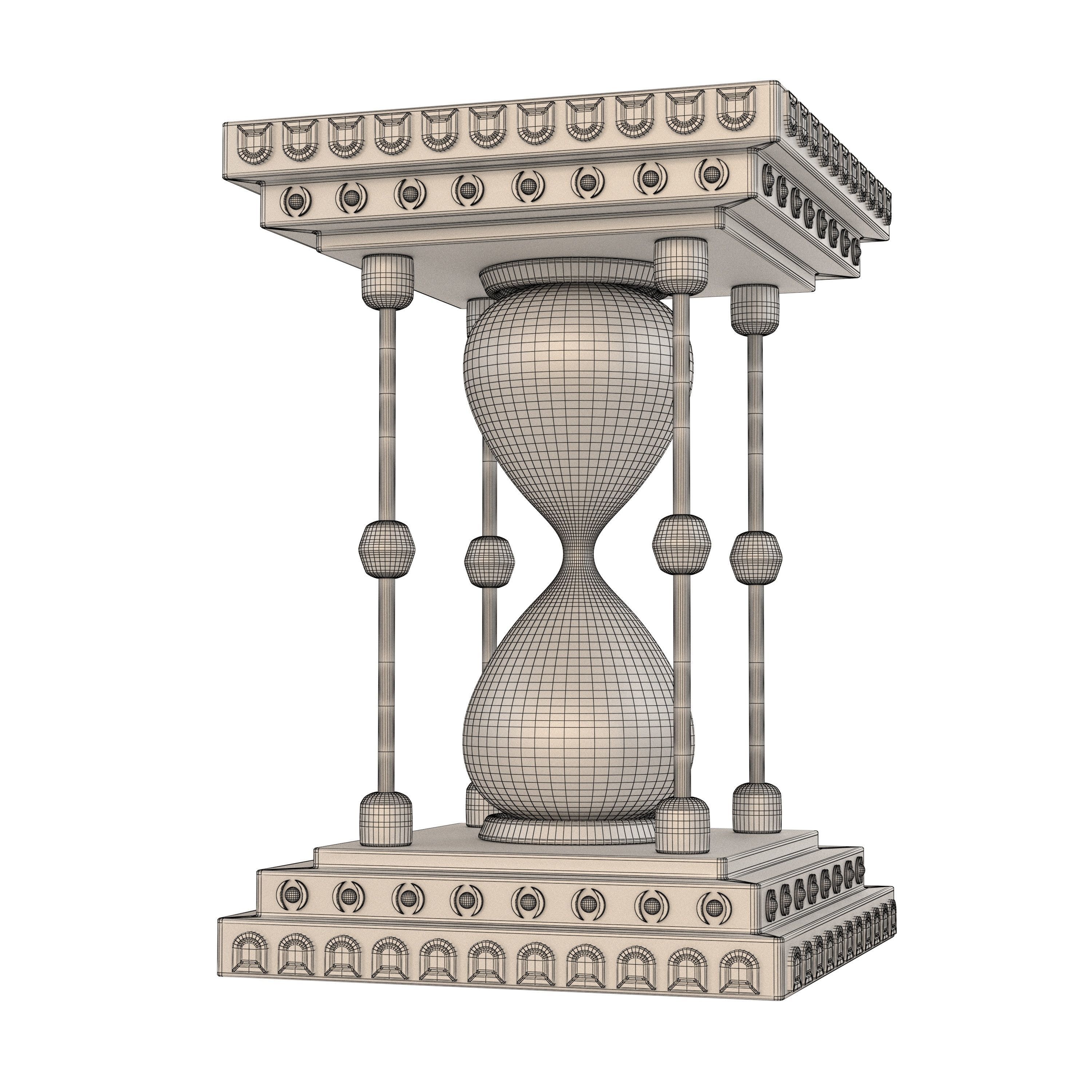
HourglassModel04 hourglass with sand in it 3D model
Name: HourglassModel01Dimensions: 26x26x38 cm
NumVerts: 118528NumPolys: 114032Num Faces: 235660
Render Engines:
- VRay_RT
File Version:
- Max_v2012 (vray)
- FBX_v2009 (vRay)
An hourglass (or sandglass, sand timer, sand clock or egg timer) is a device used to measure the passage of time. It comprises two glass bulbs connected vertically by a narrow neck that allows a regulated flow of a substance (historically sand) from the upper bulb to the lower one. Typically, the upper and lower bulbs are symmetric so that the hourglass will measure the same duration regardless of orientation. The specific duration of time a given hourglass measures is determined by factors including the quantity and coarseness of the particulate matter, the bulb size, and the neck width.The hourglass first appeared in Europe in the eighth century, and may have been made by Luitprand, a monk at the cathedral in Chartres, France. By the early fourteenth century, the sand glass was used commonly in Italy. It appears to have been widely used throughout Western Europe from that time through 1500. The hourglass or sand clock follows exactly the same principle as the clepsydra. Two globes (also called phials or ampules) of glass are connected by a narrow throat so that sand (with relatively uniform grain size) flows from the upper globe to the lower. Hourglasses were made in different sizes based on pre-tested measurements of sand flow in different sizes of globes. A housing or frame that enclosed the globes could be fitted to the two globes to form a top and bottom for the hourglass and was used to invert the hourglass and start the flow of sand again. Some hourglasses or sets of hourglasses were set in a pivoted mount so they could be turned easily.John Harrison and his brother James were introduced to clock repair by their father, Henry. At the time, clock making, or horology, was undergoing a developmental revolution. Mechanical clocks had existed since the fourteenth century, but had remained rather primitive in their operation until Christiaan Huygens invented the weight-and-pendulum clock in 1656. One limitation was that they were totally dependent upon the earth's gravity for their operation. This meant that they could not keep accurate time at sea, and could not be adapted for portability. Even moving them across a room would require adjustment.The Harrison brothers set to work on developing a marine chronometer in 1728. The motivating factor was money. In 1714, the English Admiralty set up an award of £20,000 for anyone who could provide mariners with a reliable clock that, when used with celestial sightings, could keep them informed of their longitude at sea. Mariners had to rely heavily on dead reckoning to find their way, often leading to tragic results.The Harrison strategy was to design an instrument that was not only internally accurate but also externally stable. The Harrisons made several models of marine chronometers. The fourth model proved to be the most successful. On a nine-week voyage from England to Jamaica in 1761, the device had only a five-second error.
The Board of Longitude, apparently miffed that a common artisan had achieved the coveted goal, reluctantly gave up only half of the prize. John, minus his brother, refused to accept only half of the reward and persisted until the other half was relinquished.
The Board subjected his invention to undue scrutiny and required him to design a fifth model. This time, Harrison outdid himself by designing a compact timepiece that resembled a modern day pocket watch. It was far more convenient than the previous models, which were heavy and bulky. The Board still refused to capitulate. Finally, only a personal appeal to King George III and the King's intervention could set things right, and Harrison received the full reward in 1773 at age seventy-nine. Harrison lived only three more years.




